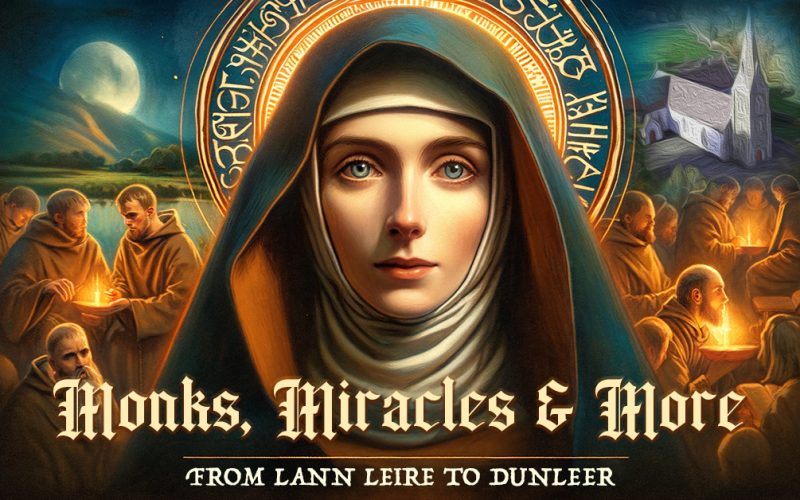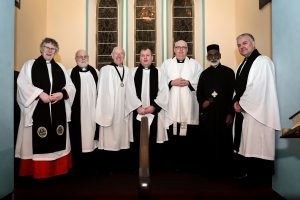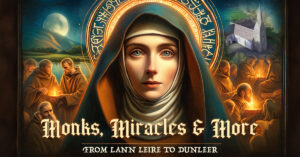In County Louth, Dunleer stands as a testament to Ireland’s complex history. Drawing from the extensive research of historians like Pádraig Faulkner, Dr. Reeves Bishop of Down, Cardinal Tomas O’Fiaidh and many others, let’s delve into the origins of ‘Lannleire’ and ‘Dunleer’. My journey with dunleer.ie revealed a fascinating slice of this history that was, surprisingly, new to me. Despite its significance, the story behind the names “Dunleer” and “Lannleire” seemed obscured in the online world. So, here’s to unearthing and sharing this intriguing past with those, like me, who were unaware of it.
The Monastic Beginnings: 'Lannleire':
Dunleer’s recorded history unfolds in the mid-sixth century with the establishment of the monastery LannLeire. Initiated by brothers St. Furodhran and St. Baodan, descendants of the Ui Cruinn, this period marked the start of recorded history in the area. The name ‘Lannleire,’ blending the Gaelic ‘lann’ (enclosure) and ‘Leire’ (austerity), embodies the monastic lifestyle. This era is significant, not only to Dunleer but also to Ireland, as it highlights the role of monasticism in cultural and spiritual development. According to “Louth History & Society,” the original site of this monastic settlement is believed to be where St. Brigid’s church now stands.
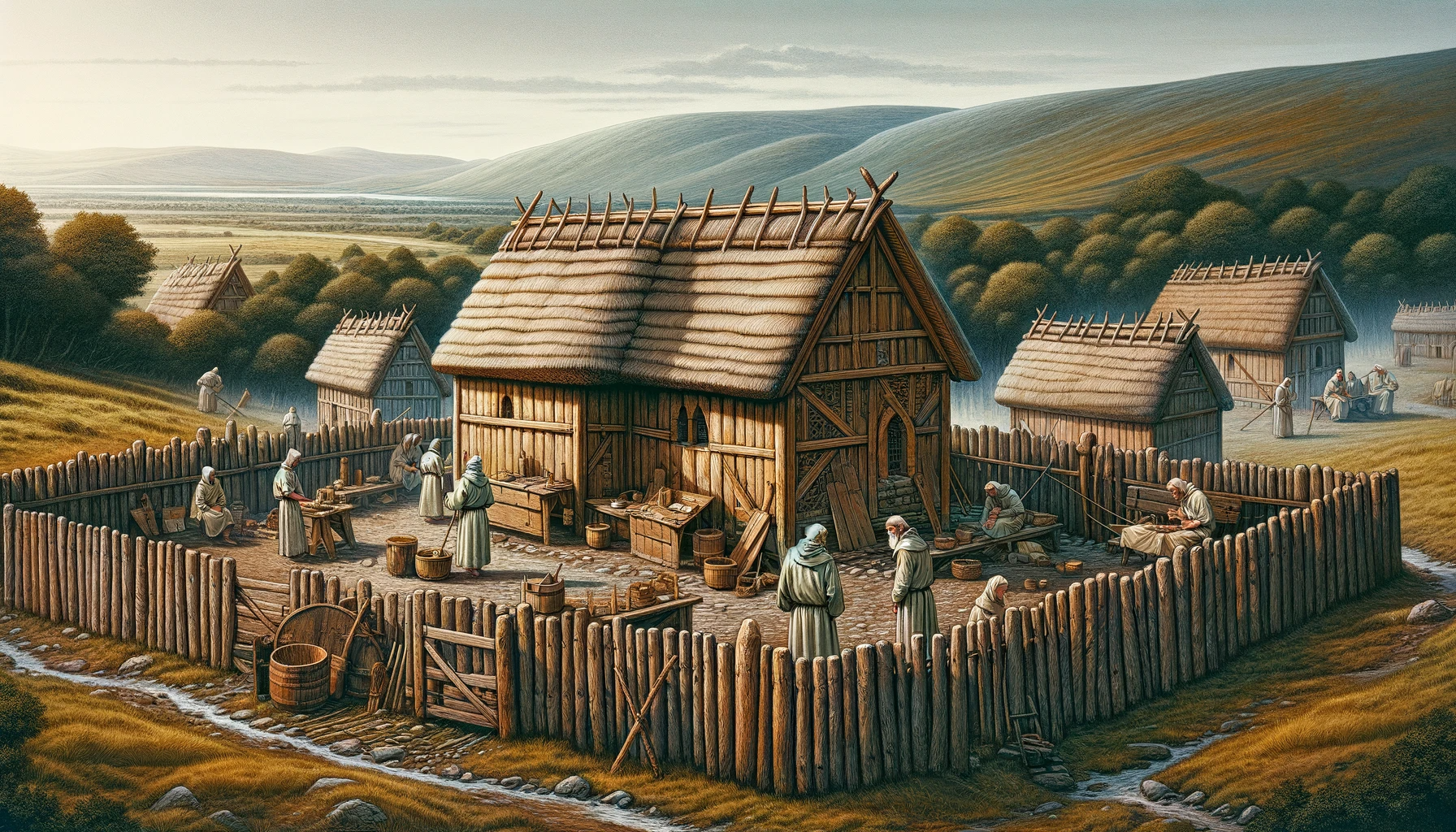
St. Finnian of Moville and the Monastery's Legacy:
St. Finnian of Moville, a contemporary of the British monks at Lann Leire, amplifies the monastery’s historical importance. His admiration for the saints of Lann Leire and their thriving community before the Viking raids signifies a beacon of learning and devotion in early Irish Christianity.
However, Lann Leire’s history wasn’t solely peaceful. The monastery endured many attacks, most notably the calamitous siege by Donnchad Dunn mac Flainn. The 1148 inferno that engulfed Lann Leire signaled a poignant closure to a significant chapter in Dunleer’s history.
St. Brigid's Legacy and 'Leirse':
Dunleer’s spiritual heritage is further enriched by the legends of St. Brigid, one of Ireland’s most beloved saints. Local tradition holds that as St. Brigid passed through the village, her presence was so captivating that it left the onlookers in awe. She prophetically stated that Dunleer would always be a place of wonder, a testament to its enduring charm and mystique.
Furthermore, historical records, such as the “Louth Survey Letters,” reference a convent dedicated to St. Brigid near the well carrying her name. This site is believed to be in proximity to where the Church of
Ireland currently stands. According to Rev. J.B. Leslie’s “Armagh Clergy and Parishes,” it’s widely accepted that the present churchyard may have been the original cemetery of the ancient abbey of Lann Leire, with the current church of ireland parish church occupying the ancient site.
In exploring the historical narrative of Dunleer, one term stands out with an enigmatic presence: ‘Leirse.’ The unique connection of this term to our town’s history primarily comes from Pádraig Faulkner’s “Dunleer through the Ages.”
“There is a suggestion that Dunleire may be derived from Dun Leirse, Dun here meaning a town built around a fort and Leirse being connected with sight. The tradition that St. Brigid was connected with Dunleer is very strong in the parish.”
Padraig’s interpretation suggests a link between ‘Leirse’ and the act of seeing or vision, tied to the miraculous tale of St. Brigid restoring her eyesight after removing her eyes to evade unwanted attention from men.
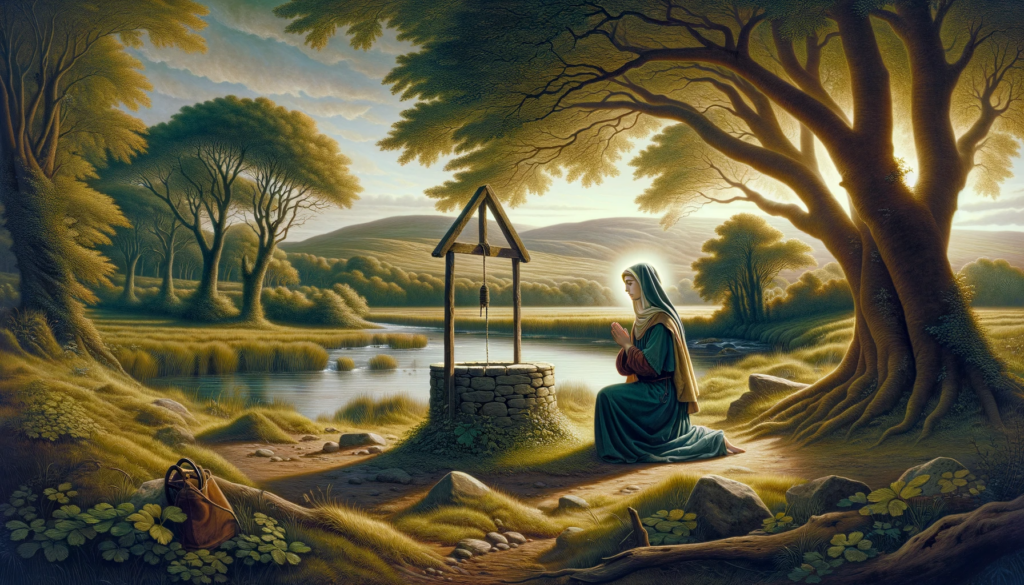
Transformation to 'Dunleer':
Over time, ‘Lannleire’ evolved into ‘Dunleer.’ This change from a monastic enclosure to a fortified settlement reflects the area’s adaptability and resilience, mirroring Ireland’s broader historical shifts. In 1212, the town was referred to as “Dunler,” a term suggesting a shift towards fortification. This aligns with historical narratives that postulate that Dunleer began to evolve into a fortified settlement after the 1148 siege. The transition from the monastic ‘Lannleire’ to the fortified ‘Dunler’ reflects a significant change in the town’s role and structure, symbolizing its resilience and strategic importance in the region. This period marks a pivotal moment in Dunleer’s history, where it began to shape into the town we know today.
Dunleer Today: A Reflection of Irish Society:
Today, Dunleer represents a complex community embodying diverse facets of Irish life. As we approach the celebration of St. Brigid in February, we are reminded of our town’s spiritual roots and enduring resilience. The St. Brigid’s Cross, an emblem of Dunleer, signifies our connection to this legacy.
In considering the contributions of St. Furodhran and St. Baodan, and the impact of St. Brigid’s miracle, I can’t help but wonder if the concept of ‘leirse’ still holds relevance. Perhaps, in Dunleer, we find not just a historical narrative, but a living example of the multifaceted nature of Irish life. As someone who has recently discovered these layers of our town’s history, I’m struck by the depth and relevance these stories hold for us today.
Works Cited
Faulkner, Pádraig. “The Clergy of the Parish of Dunleer.” Journal of the County Louth Archaeological and Historical Society, vol. 23, no. 2, 1994, pp. 218–30. JSTOR, https://doi.org/10.2307/27729756. Accessed 15 Jan. 2024.
Ó Fachtna, Pádraig. “Dunleer through the Ages.” Seanchas Ardmhacha: Journal of the Armagh Diocesan Historical Society, vol. 1, no. 1, 1954, pp. 151–62. JSTOR, https://doi.org/10.2307/29740577. Accessed 15 Jan. 2024.
Nolan, William, editor. Louth: History & Society. Geography Publications, 2023.

